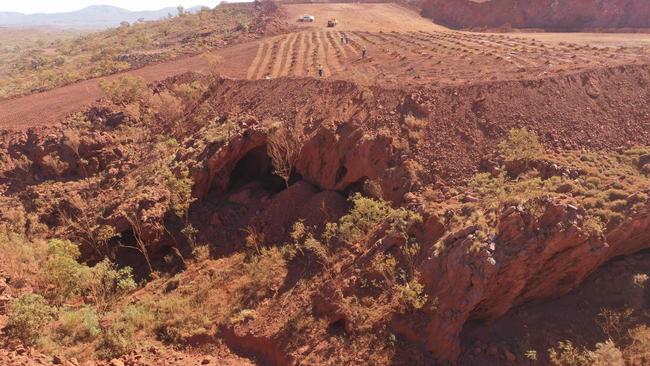‘Licence to operate’ drives mining risks: E&Y
A ‘licence to operate’ is the biggest business risk for the mining industry, according to Ernst & Young.

Rio Tinto’s destruction of the Juukan Gorge caves in Western Australia’s Pilbara has underlined a “licence to operate” as the biggest business risk for the mining industry, according to Ernst & Young.
The incident that led to the ousting of Rio chief executive Jean-Sebastien Jacques and other senior management was in part sparked by big investors and superannuation funds flexing their muscles and demanding change. They called for the miner’s board to take stronger action against key executives, arguing the initial response to strip short-term incentive entitlements was inadequate.
Institutional investors and capital markets more broadly would no longer sit in the background on contentious issues such as Rio’s heritage incident, EY said.
“The reaction reflects the changing expectations of the capital markets,” EY global mining and metals leader Paul Mitchell told The Australian.
“If you look at who owns mining companies these days it’s not mums and dads looking for dividends and holding a very small percentage of their shares.
“It’s pension funds around the world that want to have an opinion. As some become investors and think about attracting members, then you’re going to see specialist funds with tighter rules and we’re going to see differences.”
Retaining a licence to operate was the biggest concern for the third year running in a global survey of 250 global mining executives by EY, with 63 per cent flagging it as a top three risk. Nearly three-quarters of survey respondents said their companies’ impact on the local community was the issue facing most scrutiny from investors.
“The lesson for me is that this is an issue that just needs to be managed constantly and carefully,” Mr Mitchell said.
“Licence to operate isn’t a licence that’s issued under a set of regulations. It’s your broad right to be able to extract something that isn’t necessarily yours.
“The companies that think about it that way are the ones that are going to be successful. And the ones that think it can be managed very tightly within a framework are probably going to be subject to more risks than those who think about the brand of the industry as a whole and how society thinks about it.”
In May, Rio detonated explosives next to the 46,000-year-old heritage site, against the wishes of traditional owners.
It later admitted to a litany of failures in its consultations with the Puutu Kunti Kurrama and Pinikura people, and its failure to recognise the importance of archaeological evidence of the historical significance of the rock shelters.
The EY report found 79 per cent of board members said their organisations were not very well prepared to deal with a crisis event.
Volatility sparked by COVID-19 had also emerged as a new risk in the EY Mining Business Risks 2021 report, with significant uncertainty over the outlook for commodity prices given near-term supply disruption and demand uncertainty. Some 46 per cent of mining executives surveyed expect a W-shaped up-and-down economic recovery given uncertainty from the pandemic.
“The unknowns are when will Brazil come back online and impact iron ore prices, will the impacts observed in Chile and Peru impact the copper price for longer and if the US doesn’t get it under control when will we see demand return.
“All that uncertainty plays into those things. We’ve been relatively stable in terms of prices. But when you’ve got uncertainty about both supply and demand, then volatility is almost guaranteed,” Mr Mitchell said.
Decarbonisation was nominated as the third-biggest topic facing the most scrutiny from investors in relation to environmental, social and governance issues.
“Companies that fail to make their ESG case may struggle to access the capital they need,” EY said.






To join the conversation, please log in. Don't have an account? Register
Join the conversation, you are commenting as Logout